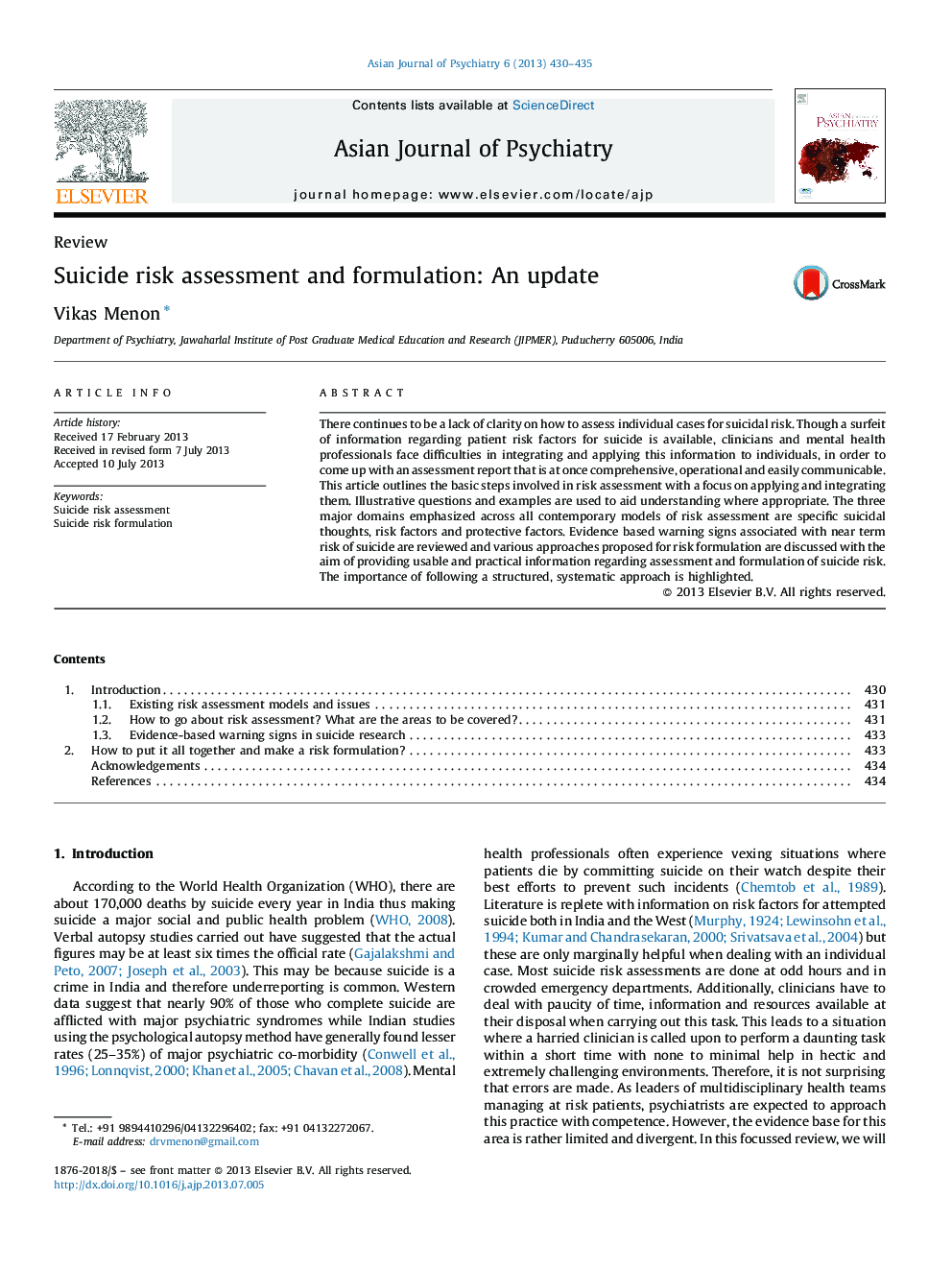| Article ID | Journal | Published Year | Pages | File Type |
|---|---|---|---|---|
| 315929 | Asian Journal of Psychiatry | 2013 | 6 Pages |
There continues to be a lack of clarity on how to assess individual cases for suicidal risk. Though a surfeit of information regarding patient risk factors for suicide is available, clinicians and mental health professionals face difficulties in integrating and applying this information to individuals, in order to come up with an assessment report that is at once comprehensive, operational and easily communicable. This article outlines the basic steps involved in risk assessment with a focus on applying and integrating them. Illustrative questions and examples are used to aid understanding where appropriate. The three major domains emphasized across all contemporary models of risk assessment are specific suicidal thoughts, risk factors and protective factors. Evidence based warning signs associated with near term risk of suicide are reviewed and various approaches proposed for risk formulation are discussed with the aim of providing usable and practical information regarding assessment and formulation of suicide risk. The importance of following a structured, systematic approach is highlighted.
